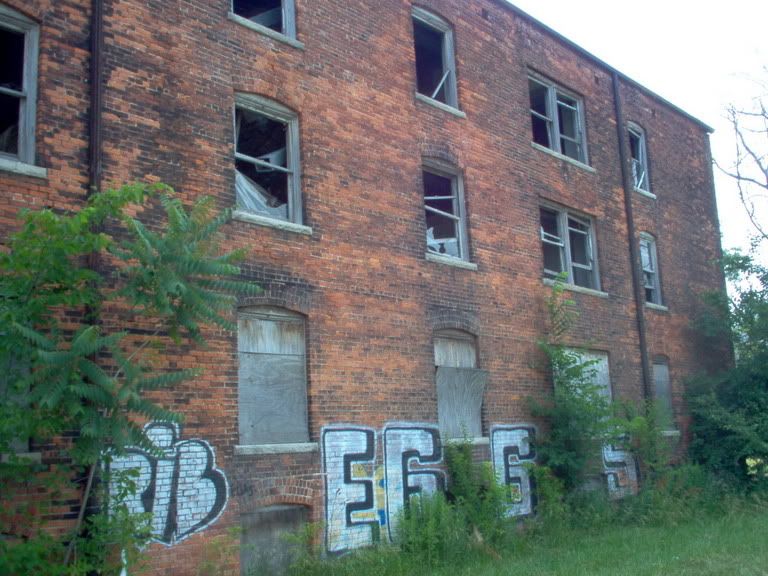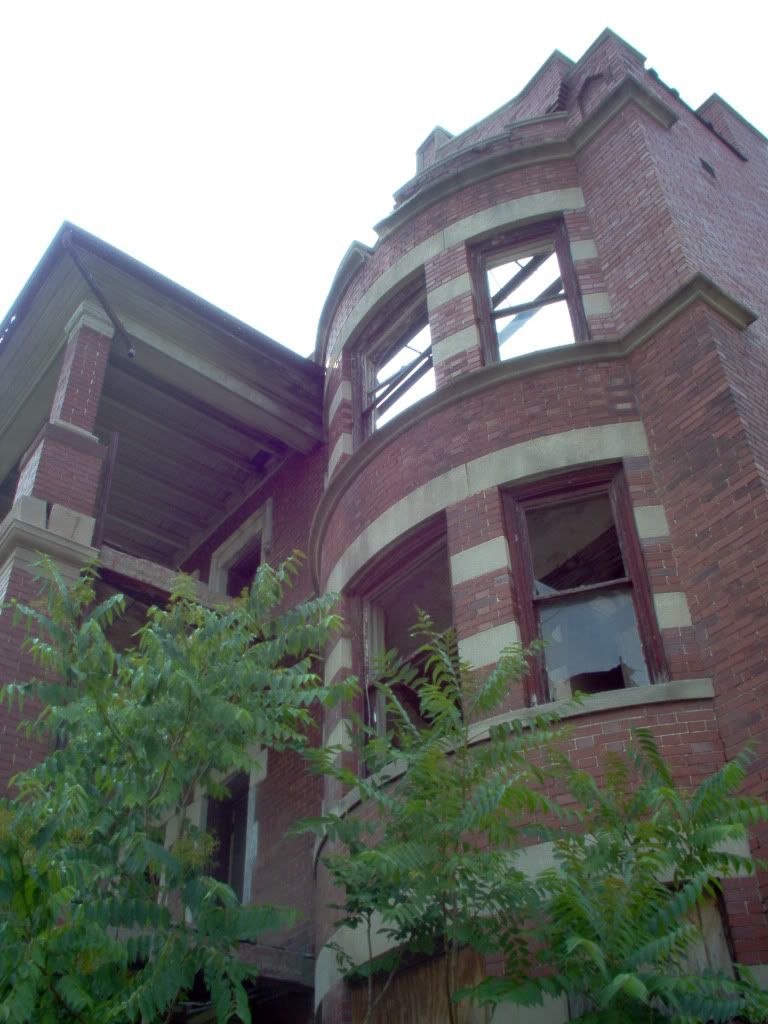Few cities have left a stronger impression on my mind and soul. Traversing 8 Mile Road, the physical and psychological divide of eternally-in-crisis Detroit and its ever-thriving suburbs, listening to the haunting music of Jocelyn Pook accounts as the most brutal, direct immersion into the realities of America: those of, basically, rampant social and racial inequality as makers of all injustice.
8 Mile Road should be designed an All-American Road. The dark path to Hell, America, deserves no less than Route 66 to epitomize our country. Whereas 66 symbolizes freedom, openness and adventure, 8 Mile is hopelessness stuck in a ruined stretch of forgotten urban land.
Why should we close the eyes of the nation to how “the other half” endures the physical and metaphoric roads of America?
A Harley Davidson crossing Arizona through an infinite highway is surely more appealing than a burned car in an abandoned auto parts store in 8 Mile, but this embodies America as much as the desert road.
Detroit.
They say it’s a city of neighborhoods, but you could say it’s a sprawling jail divided in non-communicative cells. While Metro Detroit, the suburbs, thrive and soar, the City of Detroit agonizes in a never-ending Golgotha since the 1967 riot that transformed a severely segregated metropolis into an all-black ghost town filled with ruins, unemployment and high crime, affected by the fastest and most implacable white flight America has ever seen. Race Riot. What a sad, depressing event to have as defining moment for a centuries-old town like Detroit.
I knew about the opulence of the Grosse Pointes and the poverty of Detroit, separated only by a street, but I did not expect a mile-high fence to physically separate the City of Grosse Park from the City of Detroit on Alter Road. On one side, well-kept suburban residences, tidy lawns- the American dream. On the other side, blight and bleakness, decrepit buildings, ruins- the American nightmare.
This is indeed America and we’ve seen it before, all the time, everyday. Segregation is our daily bread, whether in all-white suburbs or inner-city white and black ghettos. I see it in New York City, my home and a place that never fails to score high in the top-ten list of most segregated cities in America. Separated by mere feet, East 95th Street in Manhattan lines trillion-dollar mansions with million-dollar gold-and-glitter bathrooms; East 96th Street in Manhattan counts social housing and drive-by-shootings. Upper East Side/Harlem: difficult to conceive pockets of human life that, located together, are so traumatically far from each other. The commuter railroad makes for such a wounding abyss in the heart of the city, but America has gone out of her way to separate, divide and segregate. If railroad tracks don’t exist, fences and walls will be built to enforce inequality and white supremacy, an American tradition.
This is the case in Detroit, surpassing by far the intense segregation of New York City: The current fence on Alter Road and the invisible barrier that 8 Mile Road represents, or the actual concrete wall built by whites along the Eight in the 40’s and 50’s to keep blacks away (source: http://www.67riots.rutgers.edu/index.htm is an excellent site documenting the 1967 Riots of Detroit and Newark)

African-American psychologist and race riots scholar Kenneth B. Clark said:
"It took me 10 to 15 years to realize that I seriously underestimated the depth and complexity of Northern racism. ... In the South, you could use the courts to do away with separate toilets and all that nonsense. We haven’t found a way of dealing with discrimination in the North."
New England Yankees condemning in-your-face Southern racism while condoning and promoting “invisible” segregation and creating ghettos, destructive forces that mine the individual and the society. It should not surprise us to know that many blacks preferred the "colored only" world of the old South than the hypocritical "free but segregated" society of the North. Neither that almost all the race riots, either white- or black-triggered, in Twentieth Century America have occurred in the North.
***
I have been reading and writing about Detroit with amazement, sorrow and obsession. How could one of the grandest cities in America turned to be and symbolize one of the biggest urban failures in the world?
The answer is as complicated and multi-layered as America herself, but segregation and white supremacy, Detroit’s “institutional apartheid”, are the main reason.
As the Motor City, Detroit absorbed a great number of African-Americans that moved North in the Great Migration. Whites tried everything possible to degrade and marginalize them. Lack of housing, police harassment, governmental abuse and neglect, segregated jobs and services, unemployment, urban renewal (called by blacks “Negro removal”) that destroyed entire black neighborhoods to build highways to the suburbs…
The racist, abusive policies of white Detroit against African-Americans paved the way to a badly contained anger and resentment that exploded first in 1943 and then in 1967. Both riots were triggered by acts of police abuse, but in 67, when the automobile industry was already declining, unemployment soared in Detroit and the suburbs were unstoppably luring city dwellers, the rising was brutal, bad and definitive.
43 people died, almost all by the indiscriminate shootings of the National Guard and police. Looting and burning left Detroit in ruins. Thousands of houses were abandoned overnight, neighborhoods lost their whole population.
What I saw in 2005 is probably not very different from how the city looked the morning after the battle. The “urban prairie” is its most characteristic feature: a city block where all but one or two (if any) of the houses have vanished, the site taken over by weed, trees, debris. The sidewalks and roads disappear under the action of Nature, and you would think you’re in the expansive fields of Iowa if the skyline of downtown Detroit were not staring, imposing but impotent, at your back.
In the urban prairie, along remnants of buried houses, poverty and destruction. Walking ghosts with dead, vacant stares wander around. No hope, no present. No future.

***
Metro Detroit is an area of striking contrasts. My wife and I drove from West Michigan into Detroit. I had only a couple of hours to experience first-hand the eagerly awaited ruins of the city, but I didn’t get disappointed, if correct it is to expect a city to be ruined as hell. From Bloomfield Hills, where the exquisite architectonically masterful Cranbrook Educational Community lays, to Detroit through infamous 8 Mile Road is a trip into the extremes that make America.
We go from expensive, rich suburbs to middle-class suburbs, then to the poorest, most rundown address in the country on Eight Mile, then to the richest, most ostentatious mansions in the absurdly affluent Grosse Pointes and then again into the segregated poverty of Detroit. All within a few miles and within yards of each other. The poorest and the richest of America packed altogether into a tight area, never crossing each other’s roads and backyards, never talking, never looking at each other.
Harlem-Upper East Side in New York City is idyllic mankind compared to Grosse Pointes-Detroit. Heaven and Hell, Night and Day. America does not get more schizophrenic and divided than in this corner of Michigan.
Human living in Detroit.
***

